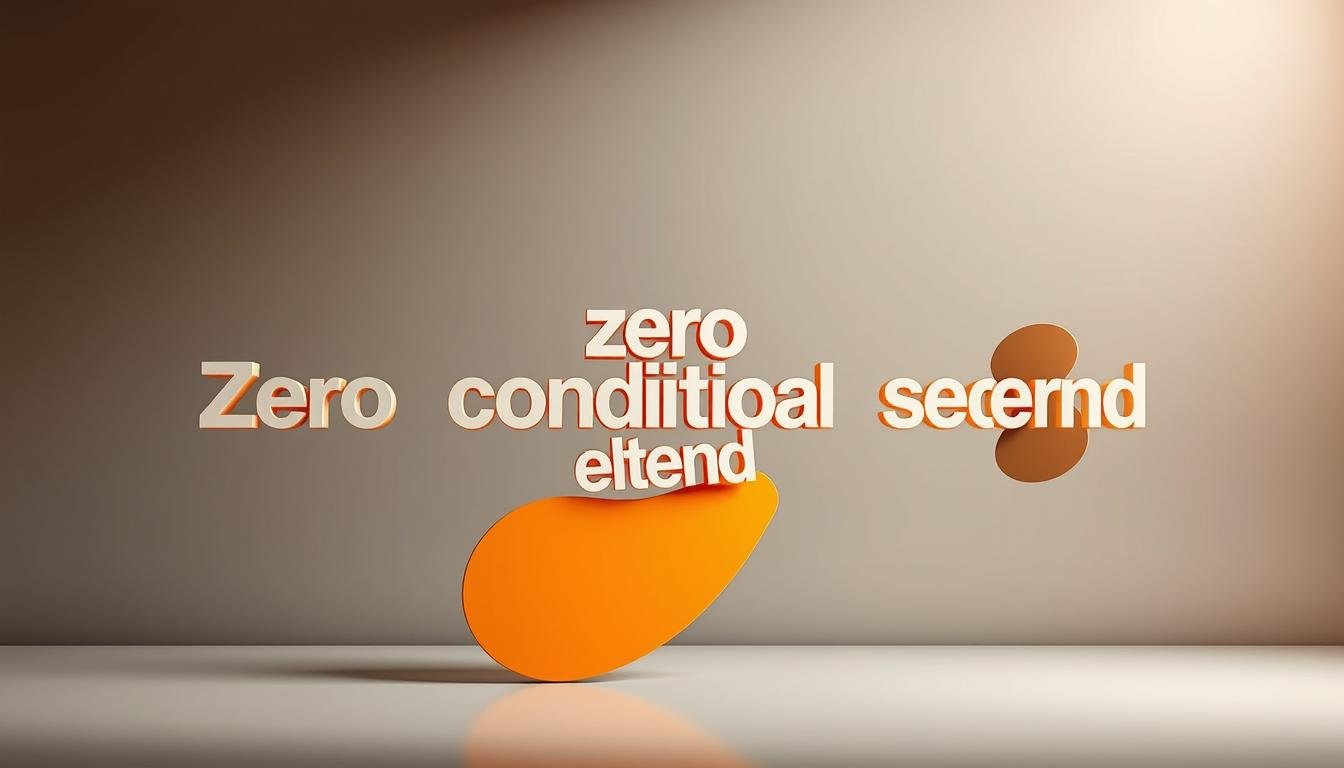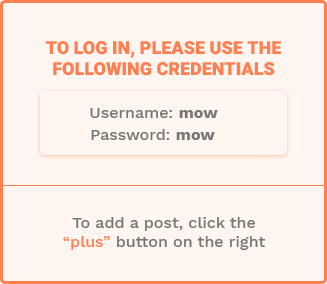Now Reading: Conditionals: Zero, First, and Second Explained
-
01
Conditionals: Zero, First, and Second Explained
Conditionals: Zero, First, and Second Explained

Conditionals: Zero, First, and Second Explained
Why do English learners often get confused about conditionals? Knowing the rules is important for clear communication. But, many find it hard to use them right. This guide makes these structures easy to understand, showing how they connect conditions to outcomes in everyday talk.

Conditionals cover scenarios like real outcomes, hypotheticals, and more. This article explains each type’s structure and when to use them. From scientific facts with zero conditionals to predictions with the first conditional. You’ll learn how to avoid mistakes and express cause and effect naturally.
Key Takeaways
- Conditionals connect real or imaginary situations with results.
- Zero conditionals explain universal truths (e.g., “If water boils, it turns to steam”).
- The first conditional handles likely future events (e.g., “If it rains, I’ll stay home”).
- Mistakes often arise from mixing verb tenses or misusing “if” clauses.
- Practice helps learners apply conditionals in conversations and writing.
Understanding English Conditionals
Conditional sentences are key for showing how actions, events, or situations relate. They make our communication clear and logical. From everyday talks to school essays, they are vital for getting our point across.
What Are Conditional Sentences?
Conditional sentences have two parts: a condition and its result. They use if to show the condition. This lets us talk about what might happen, what is true, or what could be.
For instance: If it snows, school will close. Here, snow is the condition and school closure is the result.
The Basic Structure of Conditionals
All conditional sentences have a simple two-part structure. Here’s what each part does:
| Part | Description | Example |
|---|---|---|
| If-clause | States the condition | If I study tonight |
| Describes the result |
Why Conditionals Matter in English
Conditionals are crucial for talking about real or possible situations. They help us discuss science facts (“If water boils, it turns to steam”) or plans (“If you finish work early, we can meet”). Knowing how to use them makes our English better in all areas of life.
The Foundation of Conditionals: Zero, First, and Second
Language learners often find it hard to pick between zero conditionals, first conditional, and second conditional. Each has its own role in showing certainty, possibility, or fantasy. Knowing what each does helps us communicate clearly.
- Zero conditionals state universal truths (e.g., “If metal heats, it expands”).
- First conditional describes real future possibilities (e.g., “If you study, you’ll improve”).
- Second conditional explores hypotheticals (e.g., “If I were rich, I’d buy a castle”).
| Type | Purpose | Structure | Example |
|---|---|---|---|
| Zero | Facts | If + present, present | If sunlight hits plants, photosynthesis occurs. |
| First | Possible future | ||
| Second | Unlikely scenarios |
Understanding these basics is key to mastering conditionals. The next parts will dive deeper into each type’s structure and how they’re used in everyday life. Start by learning their main functions to avoid getting confused later.
Zero Conditional Explained
Zero conditionals talk about things that are always true or scientific facts. They use the present tense in both parts. This shows a cause and effect that happens every time.
Structure and Formula of Zero Conditional
Every zero conditional follows this pattern:
| If-clause (Condition) | If + present simple tense |
|---|---|
| Main clause (Result) | present simple tense |
| Example | If metals conduct heat, they expand when heated. |
When to Use Zero Conditionals
Use zero conditionals for: scientific principles, natural laws, or universal truths. They describe situations that are always true. For example, “If sugar dissolves in water, it disappears visually.” These sentences state facts without any doubt.
Zero Conditional Examples in Daily Communication
- If you mix yellow and blue, green appears. (Color theory)
Zero conditionals make it easy to explain cause-and-effect. They are key for learners to understand grammar that shows real-world certainty.
First Conditional: Exploring Real Possibilities
The first conditional talks about real or likely future events. It’s different from the zero conditional, which is certain. The first conditional uses if + present simple for conditions and will + base verb for results.
“The first conditional bridges present decisions with future outcomes, making it essential for everyday communication.”
Here are first conditional examples showing practical usage:
- If you finish work early, you’ll join the team meeting.
- If she studies tonight, she will pass the exam.
| Condition | Possible Outcome |
|---|---|
| If it snows tomorrow | the school will delay opening |
| If we book tickets now | we’ll save 20% on the trip |
These sentences show how the first conditional prepares for realistic scenarios. Knowing this structure helps in planning, predicting, and making everyday decisions.
Structure and Formula of First Conditional Sentences
Understanding the first conditional sentence is key. It has a fixed structure. This includes the present simple in the if-clause and future outcomes with “will”. Let’s explore each part.
If-Clause Construction
The if-clause always uses the present simple tense. This rule holds even for future events. Here are some examples:
- If it rains (present simple), referring to future weather)
- If you finish work early (present tense action for future possibility)
| Structure Part | Example |
|---|---|
| If + present simple | If you study hard |
| Main clause | you will pass the test |
Results in the main clause always start with “will” followed by the base verb. You can use “might” or “can” to show uncertainty: If you ask politely, she might help. (uncertainty)
There are flexible ways to keep the meaning clear. You can use: Inverted forms: “Should you arrive late, the meeting starts at 3 PM” Alternative verbs: “If you finish by Friday, I’ll approve it”
These changes help keep the conversation flowing smoothly.
Second Conditional and Hypothetical Situations
The second conditional is key for talking about unlikely or imaginary scenarios. It lets us express possibilities that aren’t true now or in the future. Unlike the first conditional, which talks about real chances, the second is for what “might happen” in unlikely situations.

When to Use Second Conditional
Use the second conditional for three main situations: unreal present facts, unlikely future events, and polite suggestions. For example, saying “If I were you, I’d study harder” is a polite way to give advice. These sentences never talk about real or likely outcomes.
Second Conditional Rules and Structure
- Formula: If + past simple verb → would + base verb.
- Example: If it rained tomorrow, we would stay home. (Even though “rained” is past tense, it refers to a future possibility.)
- Word order: The “if” clause can come first or second in the sentence.
These second conditional rules help keep things clear. The past tense verbs show the imaginary nature of the situation.
Expressing Wishes and Unlikely Scenarios
If I had a million dollars, I’d donate it to education.
Phrases like this show what we wish for, even if it’s not possible. The structure shows we know it’s unlikely. It’s also used in hypothetical questions like What would you do if you met your hero?
Learning these rules helps us talk about possibilities beyond what’s real. It makes our conversations more flexible.
Common Mistakes When Using Conditionals: Zero, First, and Second
Learning conditionals needs careful attention. Many get zero conditionals, first conditional, and second conditional rules mixed up. Let’s look at common errors and how to fix them.
- Tense confusion in first conditional sentences: Don’t put “will” in the “if” clause. Right: “If it rains, we’ll stay home.” Wrong: “If we will go, we’ll stay.”
- Wrong conditional selection: Use zero conditionals for real things, not hypotheticals. Or use second conditional rules for things that might happen. For example, “If water freezes, it becomes ice” is zero, not second. Second would mean doubt: “If water froze now, it’d be cold.”
- Structural oversights: Forget to add commas or use wrong contractions. Always use a comma between clauses if they’re in different orders: “You’ll miss the bus if you sleep late.”
“If I was rich…” vs. “If I were rich…” Both are seen, but “were” is correct for hypotheticals. “Was” is more casual but okay too.
Don’t mix verb forms. For second conditional rules, use past tense + “would/could.” For example: “If you studied more, you’d pass” (not “you will pass”).
Practice with examples like: “If you mix red and blue, you get purple” (zero) or “If I see him, I’ll tell him” (first). Mistakes happen when learners mix up structures. Going over these rules helps clear up communication.
Practical Applications: Using Conditionals in Conversation
Learning conditionals makes grammar useful in daily talk. Let’s see how each type works in real life.
Zero Conditional in Scientific and Factual Statements
Zero conditional examples share universal truths. Scientists or teachers might say: If water reaches 100°C, it boils. These sentences show cause and effect without time limits. For example:
- If sunlight hits plants, photosynthesis occurs.
- Zero conditional examples are key in manuals: “If you heat metal, it expands.”
First Conditional in Making Plans and Predictions
First conditional examples are used in daily planning. Imagine a coworker saying: “If the meeting starts at 3 PM, I’ll join then.” This structure links present “if” clauses with future “will” actions. It’s common in:
- “If it rains tomorrow, we’ll reschedule the picnic.”
- Business settings: “If clients confirm by Friday, we’ll proceed.”
Second Conditional in Advice and Hypotheticals
If I were you, I’d study harder for the test.
Second conditional exercises explore imaginary scenarios. For instance: “If I won the lottery, I’d travel the world.” These sentences use “would” for unlikely or hypothetical situations. Practice by:
- Role-playing job interviews: “If I got the job, I’d hire more staff.”
- Talking about dreams: “If I could speak French fluently, I’d move to Paris.”
These structures help us feel more confident in talking about possibilities.
Comparing The Three Conditionals: When to Use Each
Choosing between conditionals: zero, first conditional, or second conditional depends on the situation. Each type changes how we see the scenario. It affects how likely the event is.

| Conditional Type | Use Case | Structure | Example |
|---|---|---|---|
| Zero Conditional | Facts or universal truths | If + present, present | If water freezes, it becomes solid. |
| First Conditional | Real or likely future events | If + present, will + verb | If it rains tomorrow, we cancel the picnic. |
| Second Conditional | Unlikely or hypothetical situations | If past would verb | If I won the lottery, I would travel the world. |
Choosing the right conditional starts with three questions:
- Is the situation a fact, a realistic plan, or a fantasy?
- Does the outcome depend on a real possibility or a wish?
- Does the statement describe the present, future, or an imaginary scenario?
For example, let’s look at weather statements:
“If it snows, schools close.” (Zero: factual rule)
“If it snows tonight, classes will be canceled.” (First: possible future action)
“If it snowed tomorrow, would you stay home?” (Second: imaginary scenario)
Use this guide to avoid confusion. Match the conditional type to the scenario’s reality and intent.
Effective Practice Exercises for Mastering Conditionals
Mastering conditionals needs hands-on practice. Start with zero conditional examples like identifying facts: “If water boils, it reaches 100°C.” Then, first conditional examples test predictions: “If you study daily, you’ll improve English skills.” Finally, second conditional exercises explore hypotheticals: “If I won a prize, I would travel the world.”
- Identification Drills: Sort sentences into zero, first, or second conditional types.
- Fill-in-the-Blank: Complete clauses with correct verb forms. Example: “If it rains (present tense), we will stay (future tense) indoors.”
- Situation Role-Plays: Create dialogues about travel, work, or daily life using all three conditionals.
| Type | Structure | Example |
|---|---|---|
| Zero | If + present, present | If metal heats, it expands. |
| First | If + present, will + verb | |
| Second |
If you practice consistently, your language skills will grow exponentially. — ESL Teachers Association
Self-check answer keys explain correct verb forms and contextual use. Focus on real-life scenarios like job interviews or travel plans. This shows how conditionals apply. Regular practice makes grammar rules part of natural communication.
Advanced Tips for Conditional Sentence Mastery
Mastering conditionals: zero, first conditional sentence, and second conditional exercises is more than just memorizing rules. It’s about blending structure with cultural context and practicing a lot. Here’s how to get better:
Mixing Conditionals Appropriately
Use conditionals together to show complex meanings. For instance: “If it rains tomorrow (first conditional), we’ll reschedule the picnic. If it had rained last week (third conditional), we’d be preparing now (second conditional).” This shows how past and future can mix in one story. Practice second conditional exercises that mix tenses to become more fluent.
Cultural Nuances in Using Conditionals
Native speakers use conditionals in different ways, depending on the situation. In British English, saying “If I were you” (second conditional) is perfect for giving advice. In American English, “If I was you” (first conditional) is more common. It’s important to know these differences to sound natural. Don’t use hypotheticals too much in formal talks—stick to first conditional sentence for clearness.
Building Confidence with Regular Practice
- Write daily scenarios in a journal, mixing conditionals: zero with first or second conditionals.
- Join online forums to talk about hypotheticals using second conditional exercises with native speakers.
- Watch TV shows and note how characters use conditionals in arguments or plans.
Regular practice makes complex structures second nature. Keep practicing to get better at English! Like any skill, the more you do it, the better you’ll get.
Conclusion
Conditionals are key for showing how conditions lead to results in English. The zero, first, and second conditionals each have their own role. Zero conditionals state general truths, like “If metal heats, it expands.”
First conditionals talk about likely outcomes with “will,” such as “If you finish early, you’ll have free time.” Second conditionals explore what-if scenarios with past tenses and “would,” like “If I won the lottery, I would donate funds.”
Choosing the right conditional is crucial for clear messages. Zero conditionals share facts, first conditionals discuss plans, and second conditionals explore imaginary scenarios. Practicing these helps build confidence in using them every day.
Mastering these structures lets learners share possibilities and truths clearly. By focusing on their unique patterns, speakers turn grammar rules into useful skills. Regular practice makes it easier to pick the right form, improving conversations and writing.
FAQ
Q: What are the different types of conditionals in English?
A: English has three main types of conditionals. Zero conditionals talk about general truths. First conditionals are for real future plans. Second conditionals are for unlikely or hypothetical situations.
Q: When should I use zero conditionals?
A: Use zero conditionals for facts that are always true. The structure is “If + present simple, present simple.” For example, “If you heat ice, it melts.”
Q: How do I form a first conditional sentence?
A: First conditionals are “If + present simple, will + base verb.” For instance, “If it rains, we will take an umbrella.” They talk about real future plans.
Q: What is the second conditional used for?
A: Second conditionals discuss unlikely situations. Their structure is “If + past simple, would + base verb.” For example, “If I were a bird, I would fly high.” They often talk about hypothetical scenarios.
Q: Can you give me examples of zero, first, and second conditional sentences?
A: Here are examples for each type: – Zero Conditional: “If you mix water and oil, they do not combine.” – First Conditional: “If I finish my work early, I will go for a walk.” – Second Conditional: “If I won the lottery, I would buy a house.”
Q: What are some common mistakes made with conditionals?
A: Mistakes include wrong tenses in the if-clause. For example, “If I will see him,” is wrong. It should be “If I see him.” Also, people often get confused between zero, first, and second conditionals.
Q: How do conditionals function in everyday conversation?
A: Conditionals help us talk about the future, make plans, and give advice. They make our conversations clear and insightful about different situations.
Q: What are some effective exercises for practicing conditionals?
A: Good exercises include filling in blanks with the right verb forms. Also, try converting sentences between different conditionals. Creating dialogues with all three types is helpful too.
Q: How can I mix different types of conditionals in sentences?
A: You can mix conditionals when talking about different times or possibilities. For example, “If you had studied harder last year (third conditional), you would be passing the class now (second conditional).”
Q: Why are conditionals important in English?
A: Conditionals are key for clear communication. They help us talk about conditions and their outcomes. Knowing them well makes our conversations more effective.






























